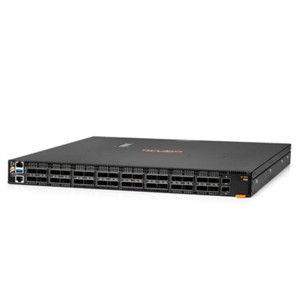The latest Wi-Fi standard is here, and it’s promising big things. But for organisations contemplating the move to 802.11ax (or Wi-Fi 6 as it’s now known), how do the promised benefits of 11ax stack up in the real world, and just when should you take the leap?
Evolving network demands shift the focus of Wi-Fi standards
Let’s first take a moment to explore the key considerations driving the development of 11ax. Working together, the Institute of Electrical and Electronics Engineers (IEEE) and the Wi-Fi Alliance identified the biggest challenges facing the current standard, 802.11ac (or Wi-Fi 5): namely the growing volume, density and bandwidth diversity of devices. Increasingly, latency-sensitive voice and video data are sharing space with small data packets from IoT devices, which can significantly slow down a wireless network.
With this in mind, the IEEE and Wi-Fi Alliance focused on improving performance under ‘typical’ rather than ‘perfect’ conditions. These days, network access points (APs) are used by multiple devices simultaneously, so the new standard is more about the network’s capacity to provide optimal throughput for all users, and less about its maximum possible speed. Efficiency is the critical measure.
The draft of the new standard was published in early 2018, however it’s likely the IEEE won’t formally approve it until late 2019. And while the final standard will likely be a little different to the draft, there’s a small risk in developing 11ax-compatible products before it’s ratified. Despite this, some networking vendors are already offering 11ax products – including Aruba with their 510 Series APs. Having followed the development of 11ax closely over several years, we jumped at the chance to take a closer look at the solution following Aruba’s recent announcement.
Promises, promises…
While 11ax will deliver enhanced experiences for all network users, there’s been a particular focus on high-density environments. This feature has been one of the most eagerly anticipated features, but also frequently misunderstood - density depends not just on the number of devices in use, but also application types. Yes, networks in high traffic public spaces such as stadiums and train stations fit the bill, however a classroom with only twenty connected devices can also be considered high-density when streaming video content.
The promised advantages of 11ax in these types of environments include:
- Quadrupled throughput
Compared to 11ac, 11ax should increase throughput by up to four times by enabling simultaneous, parallel data transmission from multiple devices with varying bandwidth needs, instead of forcing devices to compete to send and receive data.
Firstly, an enhanced multi-user feature called Orthogonal Frequency Division Multiple Access (OFDMA) allows simultaneous low-data-rate transmission from several users. In other words, it’s like encouraging small data packets (e.g. from IoT devices) to park their cars and share a bus.
Secondly, Multi-user Multiple Input/Multiple Output (MU MIMO) – introduced in 11ac – is enhanced in 11ax to allow up to eight devices to transmit simultaneously, each via a dedicated channel. To extend the transport metaphor, large data packets (e.g. streaming video) get their own lane and are never stuck behind a bike.
- Better battery life
Using a scheduling scheme negotiated with the APs, a feature of 11ax called Target Wake Time lets devices ‘sleep’ in the queue until they can transmit data. By switching to a low-energy mode when not transmitting, devices conserve battery life.
- Improved IoT handling
11ax APs have a special operating mode for low-power, low-bandwidth IoT technology like sensors and activators: they transmit via a 20 MHz-only channel in either the 2.4 or 5GHz bands - it’s like a dedicated bike lane.
Amongst a range of more impressive features is the ability of Aruba’s 11ax APs to automatically power down when demand ceases, cutting electricity usage by up to 70%, provided you are running NetInsight, Aruba’s AI-powered network analytics and assurance solution.
In addition, to our knowledge Aruba is the only vendor to have incorporated Zigbee into their 11ax APs, enabling the development of smart workplaces by facilitating communication between heterogenous IoT devices. Zigbee has long been applied in smart homes, but what it can deliver at enterprise scale remains to be seen. We’re genuinely excited to see what this delivers!
Adopt 11ax for a better network now, future-proof and enjoy even more benefits later
While we absolutely believe that 11ax will positively transform Wi-Fi networks, the full benefits can’t be experienced until a significant bottleneck is resolved - that 11ax-compatible consumer devices such as smartphones, laptops, and tablets won’t be widely available and adopted for another 18 months or so.
However, if you upgrade now from Wi-Fi standards of old – such as 11n, or even 11ac Wave 1 – you’ll immediately experience enhanced network performance. You’re effectively getting the best 11ac Wave 2 APs on the market (which is the performance you’ll get out of 11ax APs today), and more importantly, are futureproofing your organisation. In addition, backwards compatibility ensures that 11ac (and earlier) consumer devices are supported.
In terms of cost, it’s a no-brainer: Aruba’s 11ax APs are similar in price to the soon-to-be-superseded 11ac Wave 2 products.
Conversely, if you opt for an 11ac Wave 2 solution now, by the time you refresh your environment again in 3-5 years, the new standard will have long been ratified, 11ax-compatible devices will be commonplace, and your organisation will have been left behind by others taking advantage of serious performance enhancements.
As with all IT projects, when going from old to new there are some challenges and caveats. While it may seem like a daunting prospect, we’ve assisted many organisations on their migration journeys and have seen the numerous benefits of these transitions first-hand. If you’d like to learn more or are ready to take your first steps towards realising the full benefits of 802.11ax, please get in touch.
Matrix CNI is an Aruba Networks Platinum Authorised Reseller and has been the recipient of numerous awards, including Aruba Partner of the Year for many consecutive years, dating back to 2007.


